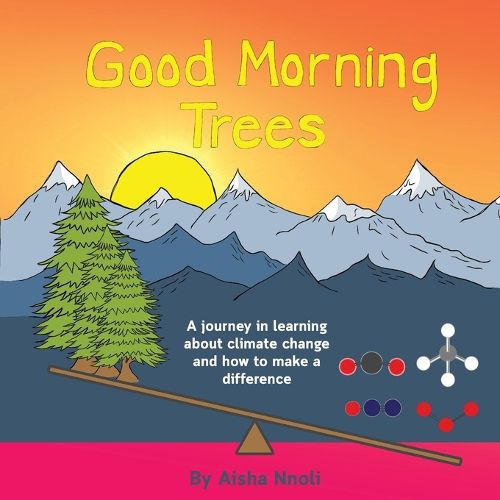Readings Newsletter
Become a Readings Member to make your shopping experience even easier.
Sign in or sign up for free!
You’re not far away from qualifying for FREE standard shipping within Australia
You’ve qualified for FREE standard shipping within Australia
The cart is loading…






This title is printed to order. This book may have been self-published. If so, we cannot guarantee the quality of the content. In the main most books will have gone through the editing process however some may not. We therefore suggest that you be aware of this before ordering this book. If in doubt check either the author or publisher’s details as we are unable to accept any returns unless they are faulty. Please contact us if you have any questions.
What are greenhouse gases and why do they matter?
Good Morning Trees takes kids on a journey to understand climate change. The importance of how nature and human activity interact is shown through colorful illustrations and engaging text. This book gives insight on the necessity of balance in nature and how we can mitigate and adapt to make positive changes within our environment.
Good Morning Trees is the perfect introduction to climate change for curious kids ages 7 and up. Parents and educators can use this book to build a solid foundation in understanding greenhouse gases, how greenhouse gases contribute to climate change, sources and sinks of greenhouse gases as well as mitigation and adaptation strategies for climate change. This book will make a great gift for inspiring current and future generations to be guardians of our Earth.
Readers can follow the blueprint pages for answering the following questions:
How does a greenhouse work?
How does our Earth stay warm?
What is a greenhouse gas?
What are examples of greenhouse gases?
What do the terms sources and sinks mean?
What are sources of greenhouse gases?
What are sinks of greenhouse gases?
What do the terms mitigation and adaptation mean?
What are examples of mitigating greenhouse gases?
What are examples of adaptation to greenhouse gasses?
What can you do to increase sinks and decrease sources of greenhouse gases in your community?
$9.00 standard shipping within Australia
FREE standard shipping within Australia for orders over $100.00
Express & International shipping calculated at checkout
This title is printed to order. This book may have been self-published. If so, we cannot guarantee the quality of the content. In the main most books will have gone through the editing process however some may not. We therefore suggest that you be aware of this before ordering this book. If in doubt check either the author or publisher’s details as we are unable to accept any returns unless they are faulty. Please contact us if you have any questions.
What are greenhouse gases and why do they matter?
Good Morning Trees takes kids on a journey to understand climate change. The importance of how nature and human activity interact is shown through colorful illustrations and engaging text. This book gives insight on the necessity of balance in nature and how we can mitigate and adapt to make positive changes within our environment.
Good Morning Trees is the perfect introduction to climate change for curious kids ages 7 and up. Parents and educators can use this book to build a solid foundation in understanding greenhouse gases, how greenhouse gases contribute to climate change, sources and sinks of greenhouse gases as well as mitigation and adaptation strategies for climate change. This book will make a great gift for inspiring current and future generations to be guardians of our Earth.
Readers can follow the blueprint pages for answering the following questions:
How does a greenhouse work?
How does our Earth stay warm?
What is a greenhouse gas?
What are examples of greenhouse gases?
What do the terms sources and sinks mean?
What are sources of greenhouse gases?
What are sinks of greenhouse gases?
What do the terms mitigation and adaptation mean?
What are examples of mitigating greenhouse gases?
What are examples of adaptation to greenhouse gasses?
What can you do to increase sinks and decrease sources of greenhouse gases in your community?